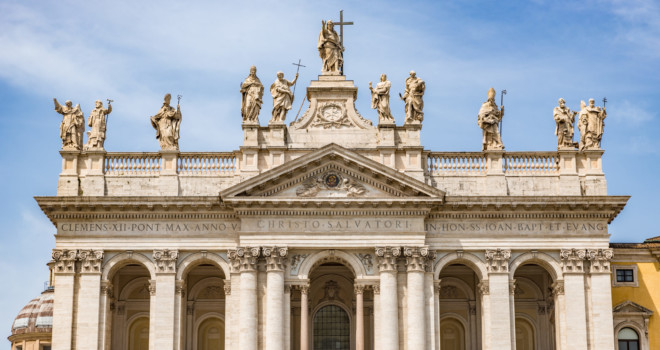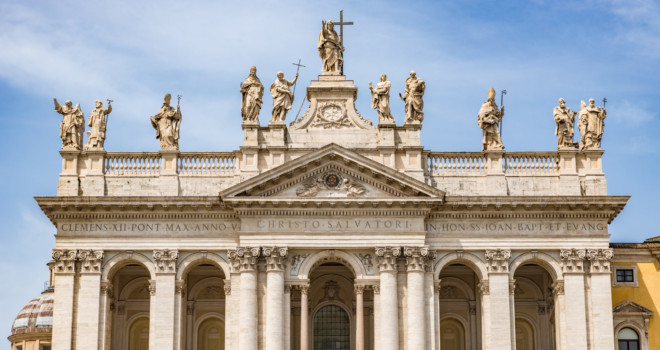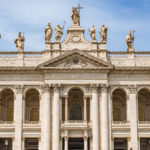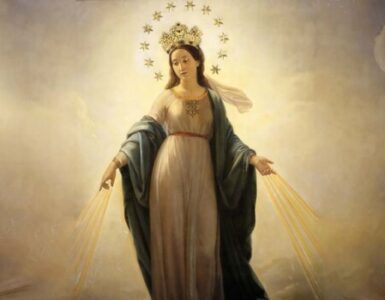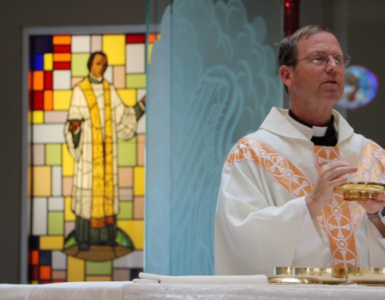No biblical relic has fascinated the curiosity of Christians such as the Ark of the Covenant. Constructed during the Exodus by the Israelite craftsmen Bezalel and Aholiab under Moses’ direction, the Ark was meant to be the tangible sign of God’s presence with Israel. It contained the tablets of the Ten Commandments, the rod of Aaron that had blossomed, and a jar of manna preserved from the Israelites’ time in the wilderness. So holy was this object that to touch it meant instant death (cf. 2 Sam. 6:7). After the building of Solomon’s Temple, the Ark was kept inside the Holy of Holies as the supreme cultic object of Israelite religion. The only person to see it was the High Priest, who entered its presence once a year to sprinkle it with the blood of atonement on behalf of the Israelite nation.
The Ark was lost sometime during the 7th – 6th centuries B.C.; most think it was lost during the destruction of the Temple by Nebuchadnezzar in 587 B.C., but some scholars suggest it went missing even earlier. The Ark was never part of the Second Temple; when the Roman general Pompey the Great took Jerusalem in 63 B.C., he entered the Holy of Holies and found nothing except the Menorah and some liturgical vessels.
The absence of the Ark has always vexed Jews and Christians, who have come up with various theories throughout the ages as to its location. Many believe it to be buried somewhere beneath the Jerusalem Temple Mount, while others say it is hidden on Mount Nebo. A popular tradition holds that the Ark is kept in the church of St. Mary of Zion in Axum, Ethiopia, while many evangelical Christians believe it is buried beneath the Church of the Holy Sepulcher.
One interesting medieval tradition is that the Ark is kept inside the high altar of the Lateran Basilica in Rome. This—along with other Temple objects—was allegedly brought to Rome after the fall of Jerusalem in 70 A.D as spoils of war. Constantine later gave these sacred objects to Pope Sylvester, who placed them in the Lateran Basilica.
In the early 12th century, the canons of the Lateran Basilica prepared a document called the Descriptio Lateranensis Ecclesiae (“Description of the Lateran Church”). The Descriptio was like a medieval guidebook, explaining to pilgrims and tourists what they would find on a visit to the Lateran church. After describing the history of the Lateran and listing many of the martyr relics kept within, the Descriptio tells us:
In the Lateran Church, which is the capital of the world, which is the patriarchal or imperial see, there is a pontifical throne of the Apostolic church, and the principal altar of the same church is the Ark of the Lord’s Covenant; or rather, as they say, the Ark is on the inside, and on the outside it is hidden by an altar, which measures the same as the Ark in length and width, between four columns of red porphyry, beneath a certain beautiful canopy, in which indeed, as they say, is a great sanctuary…This very Ark, with the candelabra and other temple objects, Titus and Vespasian carried off from Jerusalem…[1]
This is elaborated upon by William Durandus of Metz in the 13th century in his work Rationale Divionum Officiorum, a liturgical encyclopedia explaining the meanings of ecclesiastical buildings, vestments, and rituals. Durandus wrote:
And note that in the time of St. Silvester, Pope, Constantine the Emperor built the Lateran church, in which he placed the Ark of the Testament, which the Emperor Titus had brought from Jerusalem, and the golden candlestick and its seven branches. In which the ark are these things: the rings and staves of gold, the tables of the testimony, the rod of Aaron, manna, barley loaves, the golden pot, the seamless garment, the reed, a garment of St. John the Baptist, and the scissors with which the hair of St. John the Evangelist was shorn.[2]
Whatever was inside the altar at the Lateran was generally kept concealed, save for once a year on the liturgy of Holy Thursday. The ritual of this lavish spectacle has been preserved in a document called the Ordo Officiorum Ecclesiae Lateranensis, the official liturgical book of the Lateran Basilica. The Ordo tells us that the high altar at the Lateran was equipped with a removable top. The pope would arrive at the Lateran at noon on Holy Thursday to say Mass and prepare the sacred chrism for use at Easter. During the papal homily, the top of the high altar was removed by the cathedral canons and moved to an adjacent chapel, exposing the interior of the altar where the Ark of the Covenant and other sacred objects were kept. The pope then consecrated the Eucharist immediately above the sacred Ark, he alone having a view of the interior of the altar and its sacred contents. He communicated alone, symbolizing the yearly entrance of the High Priest into the Holy of Holies.
After Mass, the high altar was kept open until Holy Saturday. The opened altar was covered with a pallium and wooden cover specifically designed for this use. The altar was sealed at its four corners by the chancellor of the curia and then watched day and night by the canons to make sure nothing was disturbed. Seven lamps were lit to designate the exposure of the holy Ark. When the altar top was replaced after Holy Saturday, the canons had to physically inspect the seals to make sure nothing had been tampered with.
In 1308, a fire in the Lateran necessitated the opening of the high altar. The canons found therein relics of Christ’s blood, the wooden altar of St. Peter, and the Ark of the Covenant. The Ark was moved to the side chapel of St. Tommaso. This chapel was demolished in 1647, at which time the Ark was installed in the apse for the veneration of the faithful. Not only Christians, but Jews of Rome came to venerate the sacred object. In 1661, the renowned antiquarian Famiano Nardini came to study the object. He wrote:
But after having diligently studied this Ark, which resembles the one described in Exodus, I cannot imagine that it is a thing produced in Rome for some other use, nor do I dare declare that it is a work made out of vain pretense.[3]
Nevertheless, with the advent of modern science and archaeology, doubt began to be cast on the authenticity of the Lateran Ark. In 1745, Pope Benedict XIV ordered the Ark and other Temple objects laid out in the ambulatory of one of the Lateran side chapels for his inspection and judgement. The Ark, held within a decorated wooden chest covered with a cloth of silk, encased in a glass box. Votive lamps were burning in front of the sacred object.
Benedict XIV spent time observing the object. He left his examination without making a judgment, but presumably he spent the night pondering and praying over the matter. The next day, Pope Benedict ordered the Ark removed from the basilica. No physical or textual trace of the Ark has been found since 1745. We simply don’t know what Pope Benedict XIV did with it.
What was the mysterious object that lay hidden inside the Lateran for at least six centuries? Could it have been the Old Testament Ark of the Covenant? Where did Benedict remove it to? Was it discarded, or is it still sitting in some clammy cellar beneath the Vatican somewhere? It is one of Rome’s great mysteries.
[1] The Descriptio Lateranensis Ecclesiae, Cap. 20, 52. This text can be found in The Lateran Church in Rome and the Ark of the Covenant, Eivor Andersen Oftestad (Woodbridge, U.K.: The Boydell Press, 2019), pp. 227, 231
[2] William Durandus, Rationale Divinum Officiorum, ed. Neville Blakemore Jr. (Fons Vitae: Louisville, KY., 2007), 28
[3] Oftestad, xv.


